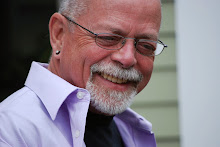Tuesday, January 25, 2011
Christopher Isherwood, George Falconer, the book and the movie, 1962
People in chat rooms say the movie of A Single Man, starring Colin Firth and Julianne Moore, is “completely different” from the book. The small group of lines from page 28 in the book—where George is thinking of what the neighbors must be thinking about him and Jim—turn into a significant addition to the big scene with Charley (Julianne Moore) in the movie. In the movie, it is Charley who asks whether he ever thinks of what “we could have been to each other, having a real relationship, with kids?” George answers, “I had Jim.” And Charley says, “What you and Jim had together was wonderful, but wasn’t it really just a substitute for something else?” George asks, “Is that what you really think, that Jim was some kind of substitute for real love?” Charley backs off. Tom Ford, who directed this movie, wants to be sure the moviegoer knows what he is seeing. This change from the book to the movie makes clearer how hostile George’s world is to George’s love for Jim, how hostile and how ignorant. Even his only friend has no idea how to value George’s love for Jim.
Only friend. In the movie, George connects, briefly, with the Spanish hustler he meets outside the liquor store and with Kenny, one of his students. Kenny pursues George after class, across campus, across town, and to the neighborhood bar near George’s house. “What do you want?” George asks. Kenny is unsure. Both of these men waltz around one another, unwilling or unable to reach out to each other. Why can’t Kenny, who seems to want to be taken, tell his teacher? And why can’t George, who seems to want Kenny, actually say, “I’d like to make love to you.” The moviegoer, watching these scenes at the bar, nude in the surf, and at George’s home, aches for them that they can’t do what they need to do, to give themselves to each other.
The changes the movie makes to the book are all there to make George’s loss clearer to the moviegoer, who may not have a sense of how it was for you then in 1962. George lives in a place where his culture is indifferent to his grief, and his grief is harder to bear because his culture is determined to make him bear it alone.
Only friend. In the movie, George connects, briefly, with the Spanish hustler he meets outside the liquor store and with Kenny, one of his students. Kenny pursues George after class, across campus, across town, and to the neighborhood bar near George’s house. “What do you want?” George asks. Kenny is unsure. Both of these men waltz around one another, unwilling or unable to reach out to each other. Why can’t Kenny, who seems to want to be taken, tell his teacher? And why can’t George, who seems to want Kenny, actually say, “I’d like to make love to you.” The moviegoer, watching these scenes at the bar, nude in the surf, and at George’s home, aches for them that they can’t do what they need to do, to give themselves to each other.
The changes the movie makes to the book are all there to make George’s loss clearer to the moviegoer, who may not have a sense of how it was for you then in 1962. George lives in a place where his culture is indifferent to his grief, and his grief is harder to bear because his culture is determined to make him bear it alone.

0 comments:
Post a Comment